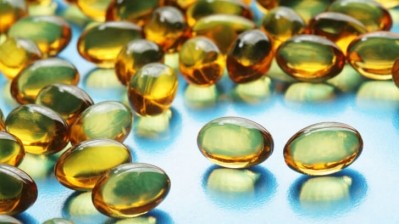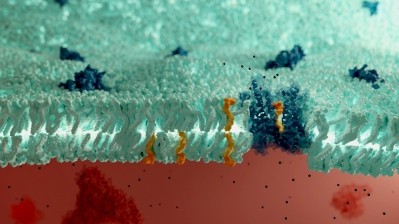Female athletes failing to meet omega-3 guidelines

The study, from Dr Sharon Madigan and her team at the Sports Ireland Institute, is the first to combine both n-3 dietary and blood FA analyses with perceived barriers in elite international level female athletes.
The team argue that previous observational research investigating n-3 dietary intake and FA blood profiles in elite female athletes is very limited and has failed to collect data on the barriers towards reaching n-3 guidelines.
Therefore, the aim of their study was to further explore the dietary intake and FA profile of elite international level, team-based, female athletes and increase understanding around perceived barriers towards reaching n-3 dietary guidelines within this population.
They discovered that elite level, team-based, female athletes do not meet the current dietary guidelines of two servings of fatty fish per week and/or 250–500 mg daily of EPA and DHA combined. What's more, no athletes reached the current O3I target of >8% (lowest risk of CHD).
They note the main barriers to reaching n-3 dietary intake guidelines reported by athletes were sensory (taste and smell), cooking skills and knowledge of n-3 health and performance benefits.
The report concludes: "Overall, this study provides athlete support personnel working within this current classification of athletes the information to design successful nutritional interventions which focus on performance and health through n-3 intake."
Anti-inflammatory fatty acids
N-3 PUFAs have unique structural and signalling properties within the body, the most notable of these being their anti-inflammatory properties.
The three most well-known n-3 PUFA are alpha-linoleic acid (ALA; 18:3n-3), eicosapentaenoic acid (EPA; 20:5n-3) and docosahexaenoic acid (DHA; 22:6n-3). ALA is a plant derived, parent fatty acid (FA) which acts as a precursor for the marine-derived EPA and DHA.
The collective n-3 PUFA literature provides evidence for promising effects on cognitive functions, physical performance, management of exercise-induced muscle damage and general health. Specifically, within females it has been linked to a reduction in the severity of premenstrual syndrome symptoms. Therefore, it should be a priority for athletes and support staff to further increase EPA and DHA intake.
The European Food Safety Agency (EFSA) recommends a daily intake between 250 mg and 500 mg of EPA and DHA combined, which equates to around two servings of oily fish per week.
The n-3 status of an individual can be gauged through the biological analysis of the blood FA profile, which is represented by the omega-3 index (O3I).
The study
Participants were recruited from the Sport Ireland Institute (SII)
The target subject pool was elite international level female athletes participating in team-based sports (hockey and cricket)
The participants were asked to complete an online n-3 questionnaire and provide a dried whole blood sample for analysis.
A total of 35 female athletes (hockey = 20; cricket = 15) with a mean age of 24.8 ± 4.5 years completed both parts of the study.
Questionnaire data revealed only 23% of participants achieved the EFSA guidelines for a combined daily intake of EPA and DHA ≥ 250 mg, and of these eight participants, four reported using an n-3 supplement.
The most common barriers to consuming ≥ 2 servings of fish per week, reported by the relevant 26 (74%) participants, were sensory (n = 11; 42%), cooking skills (n = 10; 38%), and knowledge of n-3 PUFA health and performance benefits (n = 7; 27%).
The reported sources of ALA consumed by participants included chia seeds (n = 24), walnuts (n = 22), rapeseed oil (n = 20), flaxseed (n = 15) and flaxseed oil (n = 2).
The mean daily intake of ALA (810 ± 1280 mg) was below the recommended daily guideline for females (1.1 g per day), although 20% of the participants had a daily intake of ALA above the National Institutes of Health guideline.
Supplement use was reported by four (11%) participants. The reported reasons for using a supplement were to enhance recovery and for cognitive benefits.
The participants who reported consuming ≥ 2 servings of fish and seafood per week and/or taking supplements had a significantly (p < 0.001) greater O3I than those who consumed < 2 servings of fish and seafood per week and/or did not consume a supplement (5.91 ± 0.81% and 4.82 ± 0.63% respectively).
Discussing future interventions, the authors note that the reported barriers in this study, specifically the taste and smell of fish, suggest that this general advice isn’t appropriate for everyone and alternative nutritional interventions aimed at improving O3I should be adopted, such as the inclusion of n-3 enriched foods and/or good quality batch-tested supplements. Both supplement.
The current study did not collect information on why athletes were not using supplementation. However, previous n-3 studies have reported a perception within the adult population that food alone can be sufficient, and supplementation is not required. Furthermore, supplementation within elite level athletes is not straightforward due to the anti-doping risk associated with supplements, specifically the fear that the supplement contents are different from those stated on the label.
The report states: "To maximise safety and ensure supplement standards are met, elite level athletes should choose a third-party batch-tested supplement from a reputable brand and consider recognised supplementation protocols (e.g., dose, duration, baseline O3I, training status, chemical form, and n-3 PUFA composition)."
Source: Nutrients
https://doi.org/10.3390/nu15132821
"Dietary Intake, Biological Status, and Barriers towards Omega-3 Intake in Elite Level (Tier 4), Female Athletes: Pilot Study"
Hooks, M.P.; Madigan, S.M.; Woodside, J.V.; Nugent, A.P.














